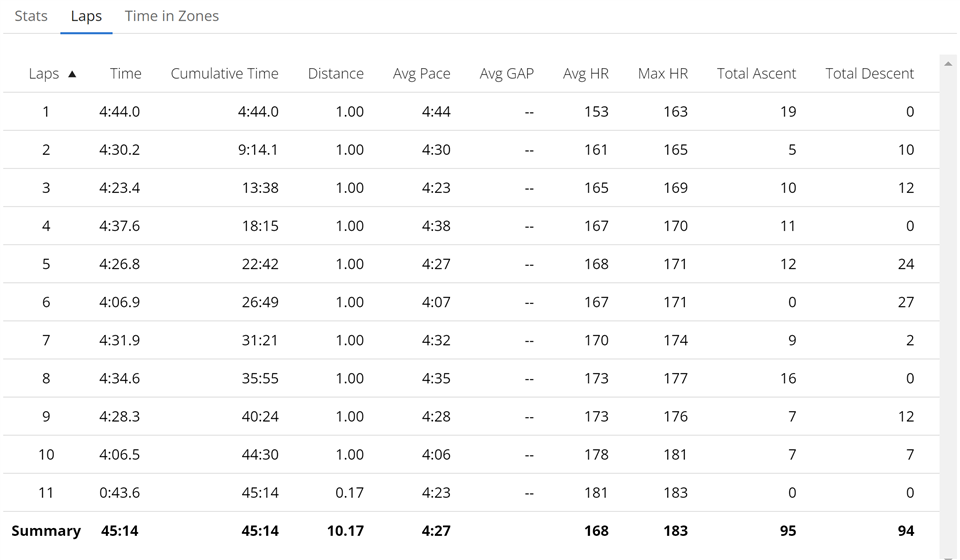Hi all,
I recently ran a 10k race using a Polar H9 heart rate monitor linked to my Garmin Vivoactive 3 watch. Upon reviewing the data collected I determined that I recorded a sustained max heart rate in excess of the Garmin calculated max heart rate. I am trying to determine if I should update my max heart rate based on the recorded max heat rate.
For reference I am a 48 year old male. Based on the max heart rate calculation of 220 minus your age, my max heart rate used to establish my training zones was 172.
Below is a screen shot from my race. As you can see, beginning at km 7, I recorded a sustained max heart rate above 172, culminating in a max recorded heart rate of 183 as I pushed all out to the finish of the race.
Does the data below justify increasing my max rate rate used in calculating my heart rate training zones? if so, what would the suggested value be?
Thanks in advance for your feedback.



